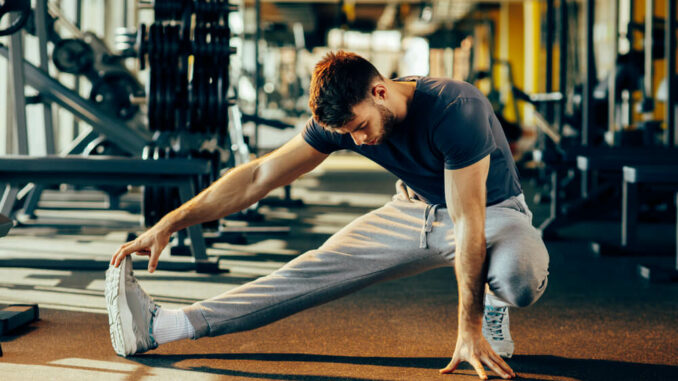
Warming up before a workout is essential to prepare your body physically and mentally for exercise, reduce the risk of injury, and optimize performance. A proper warm-up gradually increases heart rate, circulation, and muscle temperature, preparing muscles, joints, and connective tissues for more intense physical activity. This comprehensive guide will provide you with a detailed overview of why warming up is important, the key components of a warm-up routine, various warm-up exercises, and tips for incorporating a warm-up into your workout regimen effectively.
Importance of Warming Up
Warming up serves several critical purposes:
- Increase Muscle Temperature: Raises muscle temperature, making muscles more pliable and reducing the risk of strains and injuries.
- Enhance Blood Flow: Improves circulation and oxygen delivery to muscles, enhancing performance and reducing muscle stiffness.
- Activate Nervous System: Prepares the nervous system for exercise, enhancing coordination, reaction time, and muscle firing patterns.
- Mental Preparation: Helps mentally prepare for the workout, focusing attention and boosting motivation.
- Improve Range of Motion: Enhances joint flexibility and range of motion, optimizing movement efficiency during exercise.
Components of a Warm-Up Routine
A well-rounded warm-up typically includes the following components:
1. General Cardiovascular Warm-Up
- Purpose: Increase heart rate, circulation, and body temperature.
- Activities: Light aerobic exercises such as jogging, brisk walking, cycling, or jumping jacks for 5-10 minutes.
2. Dynamic Stretching
- Purpose: Mobilize joints, improve flexibility, and activate muscles.
- Exercises: Perform controlled movements that mimic the upcoming workout, focusing on major muscle groups (e.g., leg swings, arm circles, walking lunges).
3. Sport-Specific Movements
- Purpose: Prepare muscles and joints for specific movements and demands of the workout or sport.
- Activities: Perform movements or drills that simulate the motions and intensity of your planned exercise (e.g., high knees for running, shadow boxing for boxing).
4. Neuromuscular Activation
- Purpose: Activate key muscles and improve coordination.
- Exercises: Include activation exercises such as glute bridges, planks, or bodyweight squats to engage core muscles and stabilize joints.
5. Mental Preparation
- Purpose: Focus attention, visualize the workout, and mentally prepare for physical exertion.
- Techniques: Deep breathing exercises, visualization, or positive affirmations to enhance readiness and motivation.
Warm-Up Exercises
1. Aerobic Warm-Up Exercises
- Jogging: Start with a light jog to gradually increase heart rate and warm up muscles.
- Jump Rope: Perform 1-2 minutes of jump rope to elevate heart rate and improve coordination.
- High Knees: Lift knees toward chest alternately while jogging in place to engage core muscles and increase circulation.
2. Dynamic Stretching Exercises
- Leg Swings: Stand tall and swing one leg forward and backward, then side to side to loosen hips and improve flexibility.
- Arm Circles: Extend arms to the sides and make circular motions with wrists, gradually increasing circle size to warm up shoulders.
- Walking Lunges: Step forward with one leg, lowering hips toward the floor, alternating legs to stretch hip flexors and activate leg muscles.
3. Sport-Specific Movements
- Running: Perform short sprints or strides at increasing intensity to prepare for running workouts or sports involving sprinting.
- Swinging a Bat or Racquet: Practice swings or strokes with a bat, racquet, or other equipment used in your sport to simulate game movements.
4. Neuromuscular Activation Exercises
- Glute Bridges: Lie on your back with knees bent, lift hips toward the ceiling while squeezing glutes to activate core and glute muscles.
- Plank Variations: Hold a plank position on hands or forearms, engaging core muscles to stabilize spine and prepare for core-intensive exercises.
Tips for Effective Warm-Up
- Progress Gradually: Start with low-intensity activities and gradually increase intensity to avoid sudden stress on muscles.
- Focus on Form: Pay attention to proper form and technique during warm-up exercises to reinforce good movement patterns.
- Stay Hydrated: Drink water before and during warm-up to maintain hydration levels during exercise.
- Listen to Your Body: Modify exercises or intensity if you experience pain, discomfort, or fatigue during warm-up.
- Adapt to Conditions: Adjust warm-up routines based on environmental conditions (e.g., weather, temperature) and workout duration.
Incorporating Warm-Up into Your Routine
- Prioritize Consistency: Make warm-up a habitual part of your exercise routine, regardless of workout intensity or duration.
- Tailor to Activity: Adjust warm-up components based on the type of exercise, intensity level, and specific muscles or movements targeted.
- Personalize: Customize warm-up exercises and duration based on fitness level, age, and any pre-existing health conditions.
Conclusion
A thorough warm-up routine is a vital component of any workout regimen, promoting safety, performance enhancement, and overall fitness progress. By incorporating general cardiovascular activities, dynamic stretching, sport-specific movements, neuromuscular activation exercises, and mental preparation techniques into your warm-up, you can effectively prepare your body and mind for physical exertion while reducing the risk of injury. Consistently integrating a comprehensive warm-up into your fitness routine will not only optimize your workout experience but also contribute to long-term health, mobility, and athletic performance goals.